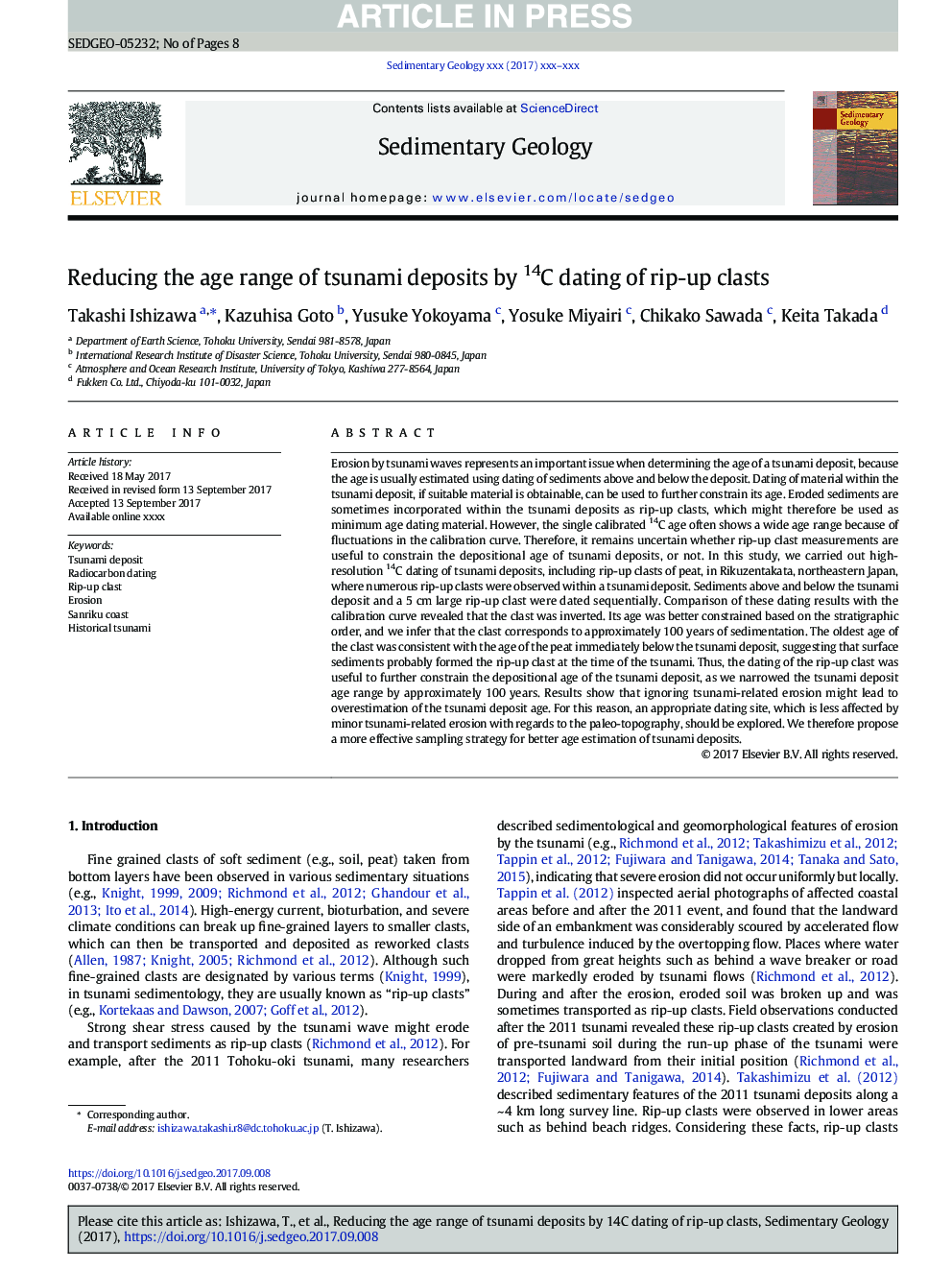| Article ID | Journal | Published Year | Pages | File Type |
|---|---|---|---|---|
| 8908562 | Sedimentary Geology | 2018 | 8 Pages |
Abstract
Erosion by tsunami waves represents an important issue when determining the age of a tsunami deposit, because the age is usually estimated using dating of sediments above and below the deposit. Dating of material within the tsunami deposit, if suitable material is obtainable, can be used to further constrain its age. Eroded sediments are sometimes incorporated within the tsunami deposits as rip-up clasts, which might therefore be used as minimum age dating material. However, the single calibrated 14C age often shows a wide age range because of fluctuations in the calibration curve. Therefore, it remains uncertain whether rip-up clast measurements are useful to constrain the depositional age of tsunami deposits, or not. In this study, we carried out high-resolution 14C dating of tsunami deposits, including rip-up clasts of peat, in Rikuzentakata, northeastern Japan, where numerous rip-up clasts were observed within a tsunami deposit. Sediments above and below the tsunami deposit and a 5Â cm large rip-up clast were dated sequentially. Comparison of these dating results with the calibration curve revealed that the clast was inverted. Its age was better constrained based on the stratigraphic order, and we infer that the clast corresponds to approximately 100Â years of sedimentation. The oldest age of the clast was consistent with the age of the peat immediately below the tsunami deposit, suggesting that surface sediments probably formed the rip-up clast at the time of the tsunami. Thus, the dating of the rip-up clast was useful to further constrain the depositional age of the tsunami deposit, as we narrowed the tsunami deposit age range by approximately 100Â years. Results show that ignoring tsunami-related erosion might lead to overestimation of the tsunami deposit age. For this reason, an appropriate dating site, which is less affected by minor tsunami-related erosion with regards to the paleo-topography, should be explored. We therefore propose a more effective sampling strategy for better age estimation of tsunami deposits.
Related Topics
Physical Sciences and Engineering
Earth and Planetary Sciences
Earth-Surface Processes
Authors
Takashi Ishizawa, Kazuhisa Goto, Yusuke Yokoyama, Yosuke Miyairi, Chikako Sawada, Keita Takada,
